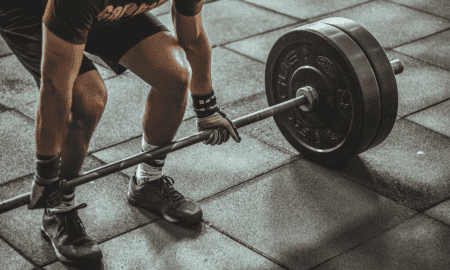
If you’ve experienced a CrossFit workout where you felt you couldn’t push yourself due to bladder control, you’re not alone. While it may feel embarrassing, urinary incontinence (UI) is prevalent as you age and across the CrossFit community.
Urinary incontinence is an involuntary leak of urine from the bladder. So, as you’re doing these CrossFit workouts and you feel the need to visit the bathroom more frequently, it’s likely that UI is the problem. There’s a link between bladder control and high-impact exercising.
Unfortunately, UI has become a common issue for CrossFit athletes, particularly women. In this article, you can explore the causes of UI and how these urinary problems impact your training and performance.
All About CrossFit
CrossFit workouts are designed as high-impact or high-intensity interval training. They are strength and conditioning workouts consisting of simple, functional movements performed at a high level to help you stay fit and healthy. Many of the workouts isolate actions you perform every day, such as pushing, pulling, or squatting.
Many of the workouts you’ll do for CrossFit involve push-ups, lifting weights, and other variations intended to help strengthen your muscles. These workouts are preferable to more traditional workouts because they can be done quickly.
The effectiveness of CrossFit is that it can benefit anyone of any age and produces results that can help with things like coordination and balance. The CrossFit community creates many challenges and games involving developing motivation to push yourself physically and gain results from those efforts.
Crossfit and Bladder Control
Problems with the urinary tract may occur for a number of reasons, from prior illness to pregnancy and birth or even hormonal changes that happen as you age. Specific fitness enhancements or medications with side effects could also be the reason behind your UI problems. You may also be experiencing issues with your weight, which puts extra pressure on the bladder muscles.
The high-impact exercises involved with CrossFit workouts also put intense pressure on the pelvic floor muscles. If your pelvic muscles are already weak or suffering, these workouts can exacerbate urinary problems and cause urinary incontinence. Even if they aren’t weak, they can weaken over time due to age, eventually escalating to urinary incontinence.
A study reported that 47.6% of women participants in CrossFit experienced UI during their workouts. It can potentially discourage them from continuing to exercise because of the embarrassing nature of leaking urine. Many athletes don’t want to admit that they have this problem and are ashamed to talk about it.
However, it’s essential for CrossFit athletes experiencing UI to take steps to help prevent and manage the problem. Plenty can be done at home to start working on the issue before discussing it with a doctor or healthcare professional.
Managing UI During CrossFit
You can implement many strategies to help manage the involuntary loss of urine. It can be challenging to deal with UI during exercise, but here are some helpful tips to help you continue your CrossFit workouts:
- Invest in bladder control underwear or pads: Many women’s absorbent undergarments are available on the market to help you feel secure when dealing with UI. Consider purchasing some of these pads or underwear to wear underneath your workout clothes so that you can continue your workout without worry.
- Strengthen the pelvic floor muscles: There are exercises that specifically target weakened pelvic muscles and help to strengthen them so that you can control your bladder more effectively. Incorporate these and do them before your CrossFit workouts to help you gain better control of UI.
- Hydration: Timing your fluid intake throughout the day is vital. For instance, don’t drink too much water right before your workout. Instead, space out your fluids throughout the day and drink plenty a couple of hours before your workout to avoid involuntary leaks.
- Side note: You should include creating a bathroom schedule for yourself, journaling how often you go to keep track of progress, and gradually increasing the time between your bathroom visits. This method can train your bladder and give you more control.
- Modify your moves: Lastly, you can modify some of your moves during the CrossFit workout so that you’re not putting too much pressure on your muscles and losing control of your bladder. Ask your trainers or coaches to help you learn how to modify specific sequences so you still get an effective workout but don’t run the risk of leaking urine.
Professional Help for Urinary Incontinence for CrossFit Athletes
UI is a complex topic to discuss and can be more so for CrossFit athletes because you’re so used to pushing yourself physically and not backing down. However, UI is a prevalent issue, and there’s nothing to be ashamed of when seeking help.
It’s imperative that you seek medical attention for urinary incontinence if the condition is continous or interfering with your daily lifestyle. Some people quit their workouts and become focused solely on their bladder, not going out and doing things socially because of the fear of involuntary leakage.
You may be referred to a specialist when dealing with UI to help create a more specialized treatment plan. Depending on the severity of your bladder symptoms, lifestyle modifications or physical therapy may be part of that plan to help you.
What’s most important is talking about the problem, whether you address your trainers and coaches first or seek the help of your healthcare professional. Don’t hesitate or wait for the problem to get worse—it’s far more common than you may think among CrossFit athletes, and the sooner you address it, the sooner you can treat it and get back to your exercise routine.
Prioritize your bladder health by bringing the problem out in the open and finding the right prevention strategies and treatments to help you manage and alleviate UI symptoms. With your bladder under control, you can confidently pursue your CrossFit goals!

















Follow Us